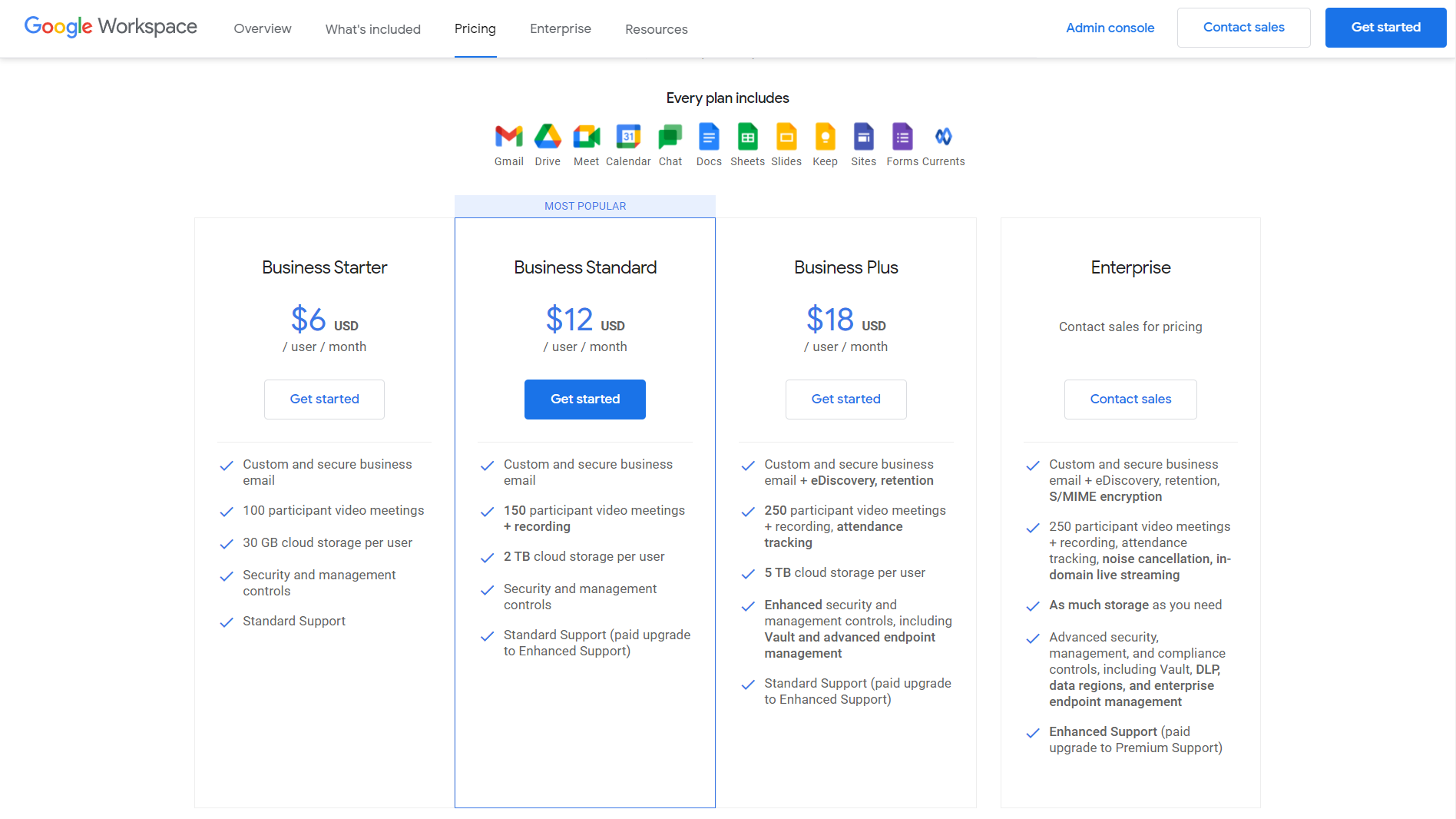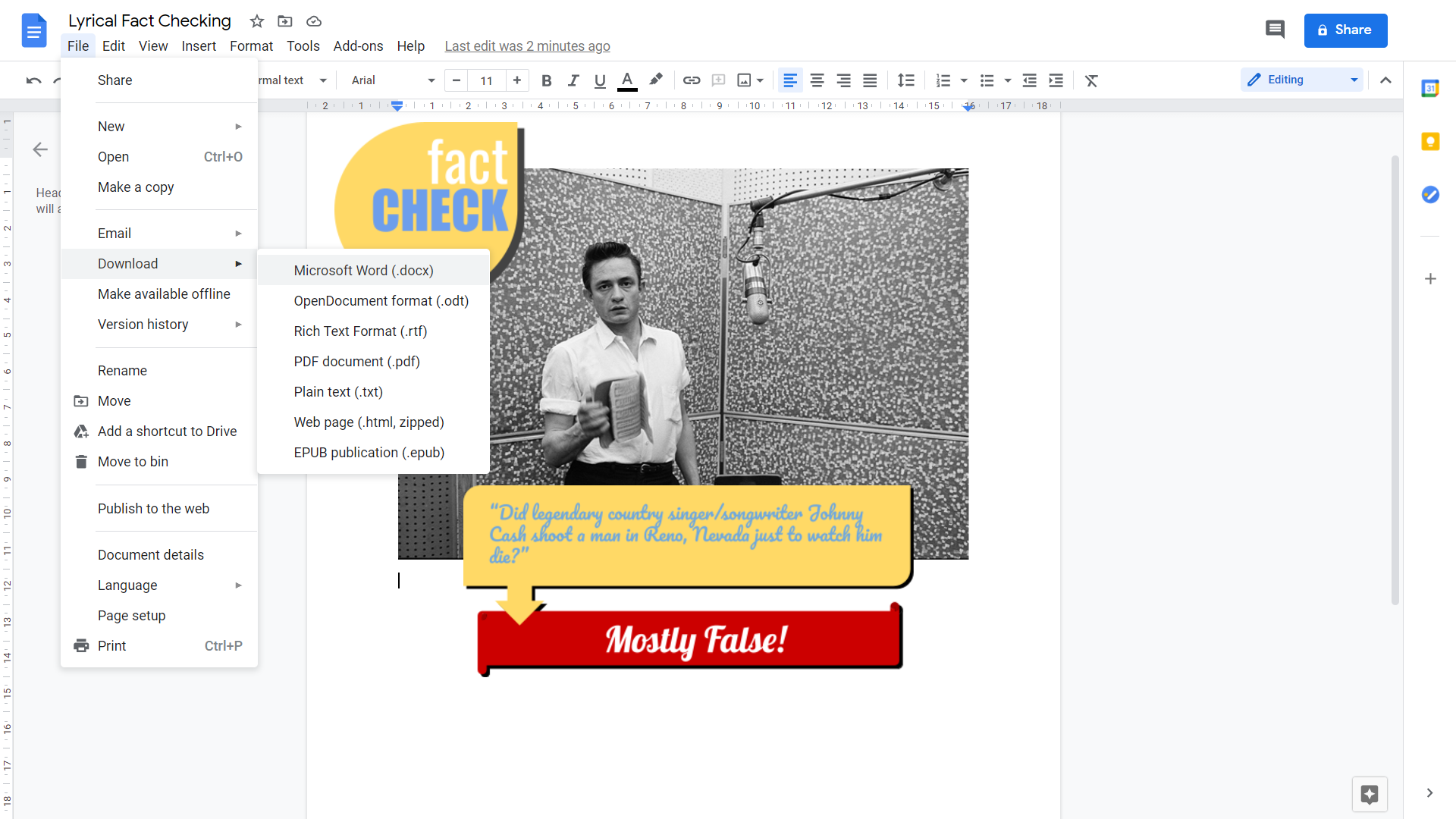Google Docs Star Wars Font
Our Verdict
Google Docs offers one of the best user-experiences in word processors right now with superior collaboration tools, support for a wide variety of formats as well as excellent ease of use.
For
- Unparalleled Collaboration Tools
- Broad format compatibility
- Fast, easy to navigate
- Simple but not dumbed down
Against
- No access to custom fonts
- Offline access requires Chrome Extension
Laptop Mag Verdict
Google Docs offers one of the best user-experiences in word processors right now with superior collaboration tools, support for a wide variety of formats as well as excellent ease of use.
Pros
- + Unparalleled Collaboration Tools
- + Broad format compatibility
- + Fast, easy to navigate
- + Simple but not dumbed down
Cons
- - No access to custom fonts
- - Offline access requires Chrome Extension
In a recent survey, two of the three people I shouted questions to from my window last week had no idea what Google Docs was, while the other simply told me to put some pants on. Ask any post-Gen Xer what Google Docs is, however, and you're likely to get a different response. While Google (the search engine) has amassed incredible popularity — claiming a market share of over 85% and becoming so synonymous with searching for things online that the brand is now more commonly used as a verb than a noun — many other services offered by the tech giants have a ways to go before attaining that same level of familiarity.
One of those services is Google Docs, a part of the free Google Docs Editor suite and premium Google Workspace suite of office and productivity tools. If you're not familiar with the name Google Workspace, you may have come across it previously as G Suite, or even further back as Google Apps. It's this stream of indecisive rebranding that has potentially inhibited the adoption of Google's premium online suite by many, but in the high-octane, adrenaline-fueled world of word processors, Google Docs is gaining more and more traction as the prime competitor to market-dominating Microsoft Word.
With more people adopting a work-from-home approach than ever before, Google Docs finds itself in prime positioning to see its user base swell. So what are some of the standout features that showcase the growing popularity of Docs and highlight it as a real competitor and potentially better-suited app for you to consider?
I get a lot of mileage out of word processors so I decided to put Google Docs through its paces and let it handle a few of my weekly ongoing tasks and projects to see how it fared.
Google Docs pricing and packages
If you have a personal Google account, you already have access to many of Google's productivity tools for free through the Google Docs Editor Suite. That means Google Docs, Slides, Sheets, Forms, Drawing, Sites, Drive and Keep are all available to use at no cost. You can also use the app versions of these tools without limitation. Personal Google accounts have a Google Drive storage space cap of 15GB, which is a sizable amount for storing office documents. However, if you need more storage, Google offers a premium service called Google One that can boost your storage to 100GB for as little as $2 a month.
There's no real drawback to using the free offerings from Google; you can accomplish a lot with Google's free offerings. However, if you're looking for something more suited for business or to manage groups of people, there's always Google Workspace.

Google Workspace is the premium productivity suite offered by Google. It includes Google Docs' suite of tools and one or two more that are focused on communication, security and administration for managing employees or users. Prices start from $6 per user, per month and the subscription includes numerous perks like custom email domains, digital whiteboarding, additional file type supports for Google Drive, chat messaging, and better phishing and spam protection. There's also sizable increases to your storage cap depending on which of Google Workspace's four premium packages you decide upon with 30GB, 2TB, 5TB options maxing out at a rather vague "As much as you need."
There are certainly reasons to go premium should you need to micromanage a number of employees or want to ditch the Gmail domain from your email. But the core office suite and its features are the main draw, and are just as functional from within the free Google Docs Editor suite.
Google design and interface
Google Docs retains the usual modern, flat, stylistic iconography that most Google products contain. While it looks great from a design perspective and breathes modernity into the typical word processor interface, I can't help but feel there's a distinct lack of personality about Docs' almost sterile appearance. This is, after all, the same company that makes its interns wear propeller hats while expecting their staff to traverse its headquarters using a series of slides and firemen poles like a bunch of pocket-protector-wearing ninja warriors.

Docs maintains its minimalistic presentation by removing a lot of the clutter that can be found in its contemporaries. Google's done this primarily by limiting Docs to one focused toolbar that covers the most common actions such as formatting, fonts, colors, alignments and inserts. Most users typically perform the majority of tasks from this primary toolbar, which is great for productivity as everything feels readily available in one easy-to-reach place.
It's worth noting that, due to the nature of Google Docs being an online service, you will be limited to fonts within the Google Fonts library. There's currently no way of importing custom fonts, which can be frustrating for those who may, from time to time, need a specialised style for a project they're working on. However, Google Fonts is fairly extensive and so, with a little creativity combined with a decent number of available add-ons, you may find this less of an issue.

Further formatting and tools are found in the dropdown menus neatly tucked into the header of the page. This brings a less distracting workspace that makes the most of whatever screen real-estate is available. However, due to Docs running through a web browser, Google's efforts only go as far as the individual user setup allows, with bookmark bars, extensions or search bars limiting the vertical space available by default.
You can, however, compensate for this by minimising the Google Docs header, which will remove the drop-down menus and broader Google Workspace icons from view, and restore some amount of lost space to the page. Docs then implements a handy search bar into your primary toolbar that allows you to look for items otherwise located in the drop-down menus, meaning you're never cut off from those tools should you need them.
The end result is more than just pleasing to the eye; the minimalist aesthetics make the overall presentation appear clean and navigation is a simple affair. Docs maintains the traditional word processor layout while simplifying it wherever possible. It's a design choice that is welcoming to new users without coming across like a stripped-down version of the competition.
Google Docs performance and compatibility
Thanks to the lightweight design found in the app and browser versions, Google Docs feels smooth and responsive with files loading with no real delay. Both the browser and app performed impressively as I switched between various documents to gauge their loading times. With most documents, you're usually ready to go within a second or two, though image-heavy files will tend to take a little longer (which is to be expected). However, the entire process of opening files from Google Drive is otherwise quick and painless.
One of the great things about Google Docs is its cross-platform capabilities. There are no OS-specific file types to deal with when it comes to Docs. Instead, anyone with a device that can run Chrome, Firefox, Safari, Internet Explorer, or Microsoft Edge (or who has the Google Docs app installed on their mobile device) can create, read, edit, and collaborate with people without any issues. This means no longer having to worry about whether a file will open on the platform of the person receiving your document. It's just one less headache in a needlessly fragmented market.

Receiving files from others made outside of Google's office suite is also much less of a headache as Docs boasts compatibility with a varied selection of file formats. Docs can read and save to many popular formats like Microsoft Word, OpenDocument, RichText, PDF and Plain Text. You can even download your document as an EPUB if you're looking to distribute it. While you can't directly save to the Apple Pages format, you can still load them into Google Docs and edit from there, though you will have to export it as a different format once you're done. This level of compatibility is hard to argue with, even if some more complex formats like PDFs tend to lose formatting upon opening.
Google Docs features
Google Docs is primarily an online tool. It was designed to be that way. As such, when it comes to working online with others, Docs shines so brightly it could direct aircraft through fog. Once you share a document via email or direct link, up to 100 people can view, edit and comment on that document simultaneously. That's one more than Word's co-authoring limit of 99. Clearly Google is taking a Price Is Right approach to outdoing the competition. I don't know what kind of horrible mess you'd have to birth in Docs that would actually require 100 people to gather around, poking and prodding it with suggestions and edits. But just knowing you can get such a large group shows the versatility of Google Docs' collaboration tools.
All edits take place in real-time, with each unique user tracked down in the document with a randomly assigned color and cursor. Their edits and suggestions are marked by assigned colors and hover to the right of the page, awaiting your feedback. If you choose to accept these suggestions, changes are made to the document automatically. Comments made by editors about specific sections are highlighted in yellow, and clicking on that section will highlight the feedback for your acknowledgment.

It's easy for documents to become cluttered and hard to read amid the collaboration process. Thankfully, Google Docs' focus on a simplified work area means you shouldn't find yourself lost amid a sea of corrections that are hard to read or process. You'll even have access to your entire edit history should you make changes you later second-guess.
Google Docs, at its core, is a fairly robust word processor. What elevates it to a true competitor are all the Google bells and whistles it brings along. Inserting charts, images or files within your document draws upon the wider Google Workspace and Google Drive services. You can translate your document to every available Google Translate language without too much fuss. You can also use your voice to type, making use of Google's impressive Speech-to-Text technology. Docs can automatically correct any spellings and make grammar suggestions in real-time thanks to Google's machine learning and dictionary. There's also the Google Workspace Marketplace which affords numerous add-ons to further expand the features available.

There are also some interesting built-in tools that further boost Docs' productivity, namely the outliner and explore tab. The outliner is a sliding sidebar menu that automatically keeps track of your headers and titles, then presents them as an interactive list that acts as an index of sorts so you can flick through larger documents much easier. Near the base of the page is a floating button that directs you to the explore tab, allowing you to quickly search for citations, images and Google Drive contents.
Google Docs autosave
One of Docs' most valuable features is its auto-save. You'll notice a distinct lack of a save button within Google Docs; this is because saving is a continuous process performed automatically with each keystroke and click (so long as you have a stable internet connection). It's invaluable if you're the type of person who often saves as an afterthought rather than a habit.

Should your computer lock up — or you leave your device unattended briefly and that Windows Update you've been delaying for a week finally decides to push itself through — you won't be left as a potential r/WatchPeopleDieInside candidate. In fact, should that happen, you could avoid any wasted time and load up the same document on another device and seamlessly continue your work from the moment you left off. And once you have access to your main device again, simply switch back with all your up-to-date work waiting.
Thanks to spotty internet, there were a few times I lost connection while using Google Docs. In those moments, I continued writing and the document instantly began its saving routines once a connection was re-established. There is an offline version of Google Docs available, but it's only obtainable through a Google Chrome extension. For an app that does so much to promote compatibility across numerous platforms and browsers, it's a shame Google decided to lock offline access in such a specific way.
Bottom line
When it comes to choosing your word processor or office suite, we all know that Microsoft is the king of the hill in many eyes. With nearly four decades of development, it isn't easy for another tool or suite to come along and catch up. And while it can be said that Google Docs doesn't quite have the same level of features as Word, is it really missing $70 worth of features? In my view, no. Most of what Docs is missing can be found as add-ons, and the tools it does offer for free should make you second guess paying so much for a Microsoft 365 subscription.
There's a freshness to what Google is offering with Docs; it looks modern, feels modern and is made with modern internet-focused collaboration in mind. What it does, it does very well. What it doesn't do won't be important to most users.
Docs outshines the competition in collaboration, portability, compatibility, and even in potential customization through the Google Workspace Marketplace. It's easy to get the hang of, there's less clutter, and the overall experience is smooth and intuitive. Oh, and it's free.
To anybody subscribed to the competition, Google Docs is at the very least worth giving a shot because you may be paying for a suite of tools that is already available to you for free.
Google Docs, either through Google Docs Editor suite or Google Workspace is a definitive challenger in the office and productivity suite market. It may even be the future of it.
Google Docs Star Wars Font
Source: https://www.laptopmag.com/reviews/google-docs
Posted by: hookerlikedy.blogspot.com

0 Response to "Google Docs Star Wars Font"
Post a Comment